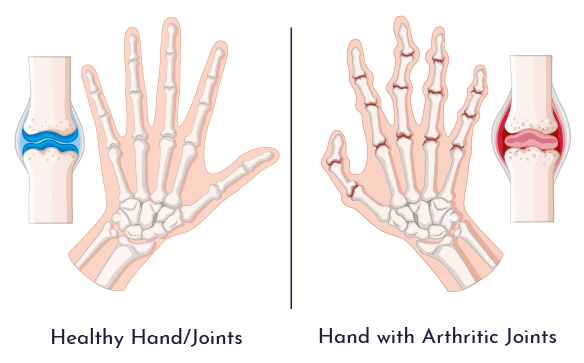Osteoarthritis
Osteoarthritis (OA) is the most common form of arthritis. Some people call it degenerative joint disease or “wear and tear” arthritis. It occurs most frequently in the hands, hips, and knees.
With OA, the cartilage within a joint begins to break down and the underlying bone begins to change. These changes usually develop slowly and get worse over time. OA can cause pain, stiffness, and swelling. In some cases it also causes reduced function and disability; some people are no longer able to do daily tasks or work.
The hand and wrist have multiple small joints that work together to produce motion, including the fine motion needed to thread a needle or tie a shoelace. When the joints are affected by arthritis, activities of daily living can be difficult. Arthritis can occur in many areas of the hand and wrist and can have more than one cause.
Over time, if the arthritis is not treated, the bones that make up the joint can lose their normal shape. This causes more pain and further limits motion.

Source: Mensch Vektoren von Vecteezy
Therapeutic Challenges
With an ageing population being one of the main causes for growing rates of osteoarthritis throughout Europe, the rise of electronic handheld devices has also increased the potential for finger joint arthritis in young adults.
OA of the hand is a progressive disease, meaning it starts off slowly and gets worse as the years pass. OA symptoms are currently treated with a combination of therapies, including lifestyle adjustments, physical therapy, weight loss, medications, supporting devices or surgery.
However, currently available implants are invasive, sacrifice large amounts of tissue and, most critically, do not restore the original mobility of the joint, which can lead to pain and discomfort in the patients’ everyday lives.